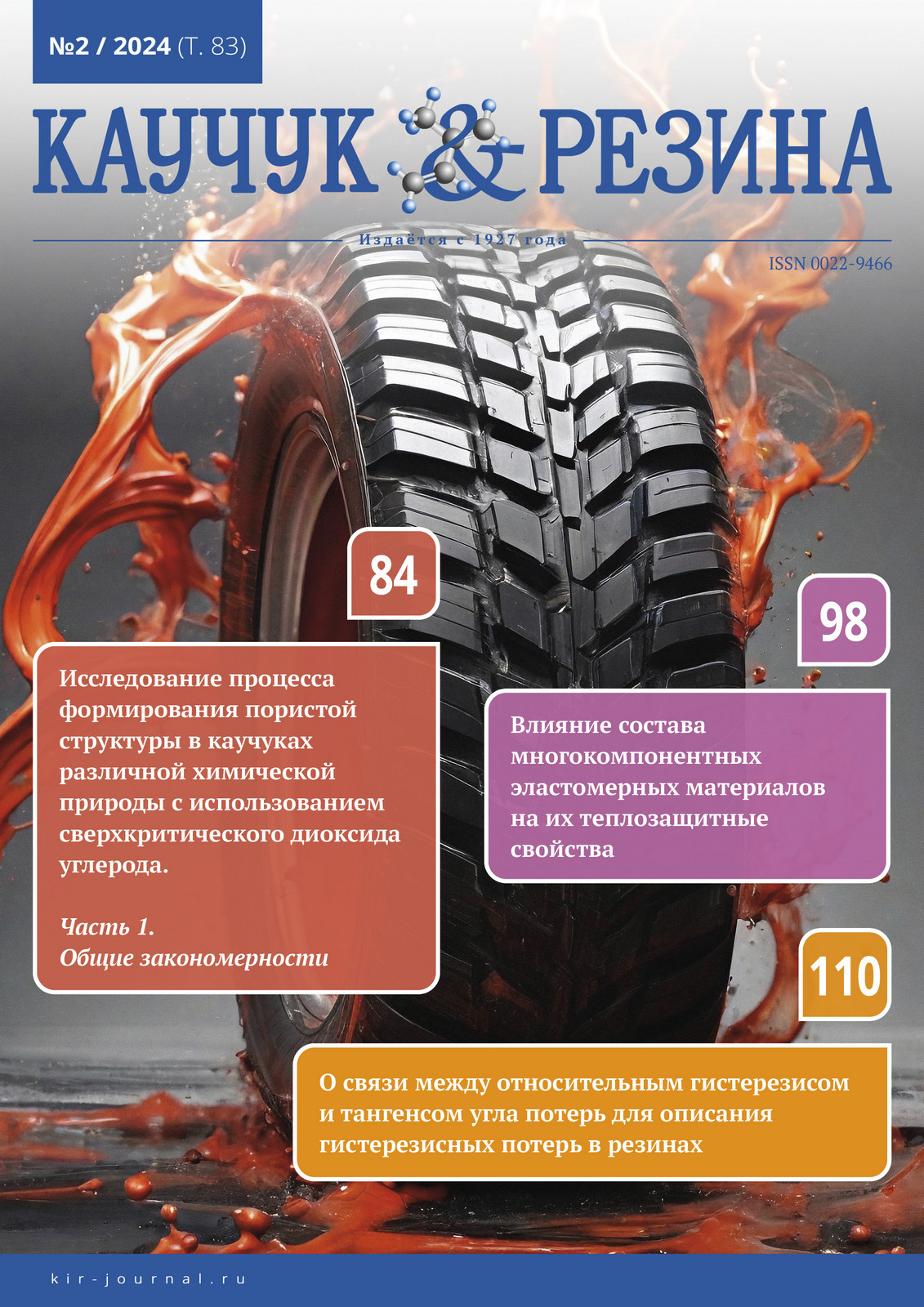Study of the Formation of a Porous Structure in Rubbers of Various Chemical Natures Using Supercritical Carbon Dioxide. Part 1. General Patterns
Published 2024-04-29
How to Cite
Abstract
The results of a study of the formation of a porous structure in rubbers of various chemical nature using carbon dioxide in a supercritical state (SC-CO2) are presented. The process of swelling of rubbers in SC-CO2 and their subsequent foaming was carried out according to a specially developed technique on the original installation, which is a high-pressure apparatus with transparent windows, allowing the use of an optical technique for directly measuring the geometric dimensions of samples during swelling and foaming using a digital video camera. Experimental kinetic curves of foaming of isoprene, butadiene, styrene butadiene, ethylene propylene, chloroprene, ethylene acrylate, siloxane and organofluorine rubbers have been obtained. It was found that the degree of foaming of rubbers depends on the diffusion coefficient of SC-CO2 in them and increases with its decrease. It is shown that the growth rate of gas bubbles is higher the larger their size. It has been shown that the larger their size, the higher the growth rate of gas bubbles. The growth rate of gas bubbles in the surface layer is higher than inside the rubber mass. This leads to an increase in the heterogeneity of porous samples in terms of the size of the resulting pores. It has been shown that the presence of emulsifier residues in rubbers can significantly increase the rate of formation of gas bubbles and the degree of foaming of rubbers.

